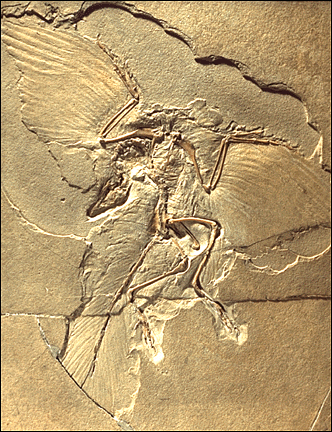15 nouveaux oiseaux et 6 nouvelles chauves-souris ont été découverts par une technique d'identification ADN appellée bar coding. Cette technique se base sur le même gène mitochondrial présent chez tous les animaux.
L'étude a été menée sur 2500 spécimens d'oiseaux détenus au Canada, et sur une importante collection de chauve-souris guyanaises.
Je ne dirais pas que je suis une grande fan des techniques ADN (elles ont leurs avantages mais aussi leurs inconvénients); mais ceci est intéressant et peut-être un bon point de départ pour d'autres études.
Texte original ci-dessous
BIRDS, BATS, AND BAR CODES
Fifteen bird species have been newly discovered by a DNA identification technique called bar coding, researchers reported online 19 February in Molecular Ecology Notes. They've also uncovered six new bat species in bat-rich Guyana.
A different bat.
CREDIT: ALEX BORISENKO 2006, ROYAL ONTARIO MUSEUM
The Barcode of Life project seeks to determine the DNA sequence of the same mitochondrial gene in millions of Earth's fauna. The variations in the sequence provide a unique, easy-to-read species identifier, scientists say. Until now, bar coding hadn't been tested in either mammals or widespread bird populations. For the bird probe, evolutionary biologist Paul Hebert of the University of Guelph in Canada and colleagues cataloged DNA from 2500 specimens supplied by museums and bird banders in the United States and Canada. The samples represent 643 of the 690 known North America-based species. Bar codes supplied some surprises, revealing 15 "cryptic" species: birds so similar to other birds that they had not been seen as distinct. What's more, eight supposed gull species turned out to be just one, and birds from 14 other supposed species were virtually identical to at least one other species.
In the mammalian end of the project, Hebert's team turned to Guyana, taking tissue samples from 840 bat specimens in the Royal Ontario Museum. There was concern that the species would be too closely related to reveal genetic differences. Yet the researchers easily distinguished the 80 or so species in the collection and discerned several new ones, Hebert says. Such studies have the potential to "break bar coding" by proving to skeptics that species can't always be distinguished on the basis of just one gene, says project member Mark Stoeckle of Rockefeller University in New York City. "But it's worked everywhere it's been applied."
